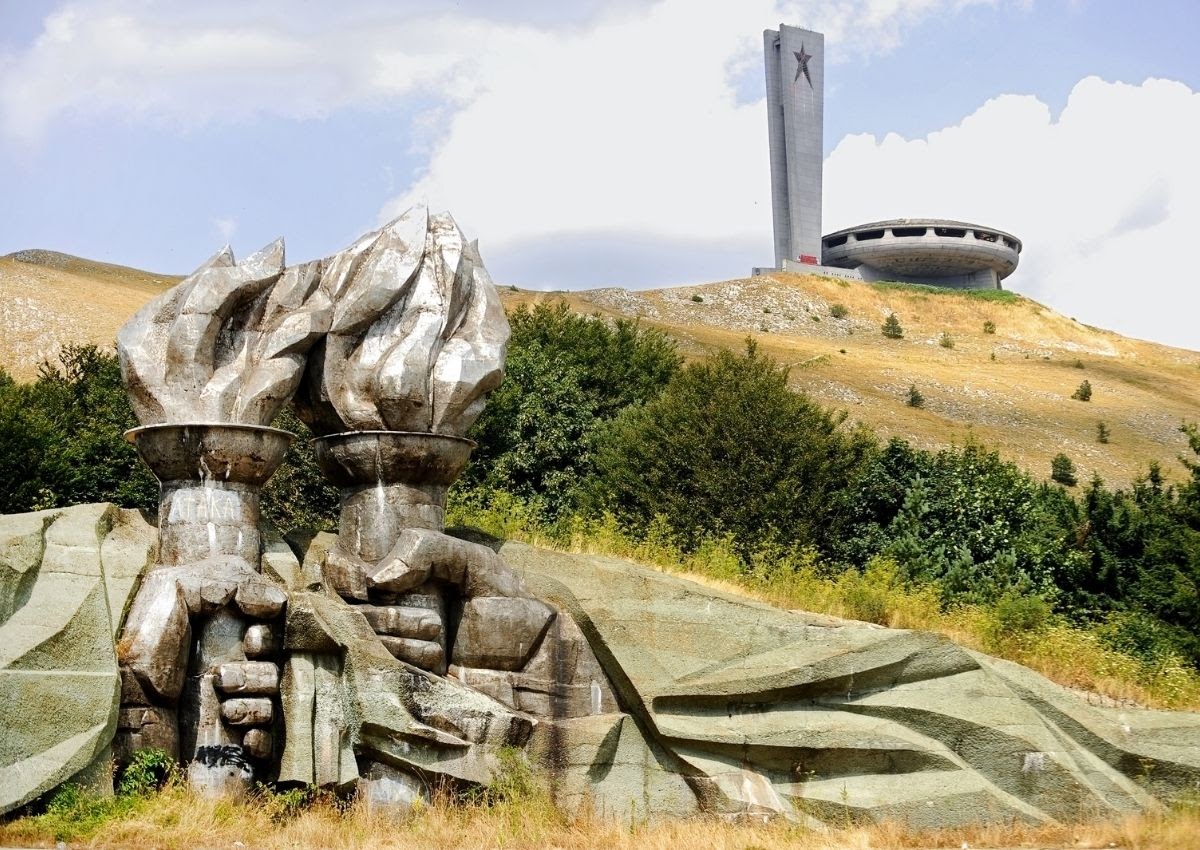If you’re an avid urban exploration enthusiast, then you’re in for a treat! If you didn’t know, a lot of European countries such as Bulgaria, Croatia, Poland, and former Czechoslovakia were under communist rule or partially ruled by communist parties. Most of the monuments during this era were destroyed but there are still remnants of these structures that have blended in with modern-society.
From large gathering places of communist leaders to buildings built for the working class/by the working class, we’ll show you three of the weirdest abandoned communist monuments in Europe.
1. Petrova Gora, Croatia
First on the list is the Petrova Gora Monument which was built in 1981 by Vojin Bakić. The monument is 12 stories high and it was built in memory of the people who fought the fascist oppressors during World War 2.
It’s located on top of the Petrova Gora mountain (Peter’s Mountain), a mountain that has a vast underground tunnel system and chambers that were used during WWII. The secret hideout was used as hospital to treat wounded fighters during the war or sometimes a printing press for the League of Communists of Yugoslavia
There’s a lot of brutalist monuments found across the former Yugoslavian territories and most of them are protected by the Croatian government. However, this is not the case for the Petrova Gora Monument because it lacks proper documentation to be considered as a protected site. This is the reason why the monument looks like it’s stripped down because the locals steal the panels and other construction materials found within the building.
But despite all the lootings and destruction, the building’s interior is mostly made of poured concrete that extends up to 12 stories high so that’s why this abandoned communist monument still stands and will most likely remain for decades to come.
Croatia has changed throughout the years and this communist monument isn’t really considered as a remembrance of Croatia’s past achievements. Despite being abandoned and unused, the structure exists for a practical reason now since it’s used as a broadcasting tower for the country’s telecommunications services.
(Varna Liberation Monument by Klearchos Kapoutsis @flickr)
2. Monument of the Bulgarian-Soviet Friendship, Bulgaria
It was in 1958 when the idea of building the Varna Liberation Monument a.k.a Monument of the Bulgarian-Soviet Friendship was first pitched to commemorate Russia’s support of Bulgaria in the Russo-Turkish War in 1828-1829. Russian forces landed at the north coast portion of the city and made camp in Turna Tepe hill as they prepared for what’s going to be a two-month siege of Varna. Though based on history preceding the construction of most communist monuments, it was still integral to Bulgarian-Soviet relations.
The Russians helped the Bulgarians retake the city by fighting the Ottoman forces. The abandoned monument that you see now stands on the exact spot where the battle took place and where many lives were lost.
It took 27,000 volunteer workers and four years of hard work to finish the gigantic structure and its 400 square meter platform base.
There’s a total of 180 floodlights that lit up the monument during nighttime so it can be seen from a distance even by sailors who were far out in the Black Sea. Visitors were also greeted with the Symphony No. 7, a musical masterpiece created by Russian composer Dmitri Shostakovich.
On the inside, the monument is very spacious with lots of passages and chambers that were used to store artifacts and other memorabilia of the Russo-Turkish war. Meanwhile, other parts of the building were used as meeting halls for very important events.
A very distinct artifact that’s found above the entry staircase is the monumental plaque with a quote from Bulgaria’s first communist leader Georgi Dimitrov that says: “Friendship with the Soviet Union is as essential as is the sun, air and water for the living creature.”
From the monument’s ground floor leading down to the base of the hill, there are even more chambers that housed a bookshop, a library, a bomb shelter.
However, it was in 1989 when political reforms were made and the monument was left unmanaged. Now, locals loot the place for free building materials.
3. Buzludzha Communist Party Headquarters, Bulgaria
It was the Bulgarian communist regime who ordered the construction of the Buzludzha to commemorate the place where the Bulgarian Social-Democratic Workers’ Party (which later became the Bulgarian Communist party) was organized.
This communist monument was opened in 1981 and this modernist-style building with the shape of a UFO costs 7 million Euros.
Annual meetings and large gatherings were held at the monument, but when political reforms were made, communism fell in 1989 and the building was left unused. It slowly declined as natural elements and local vandalizers destroyed the building.
The abandoned communist monument is found in Central Bulgaria and is close to the towns of Shipka and Kazanlak. It was named after the Buzludzha mountain which is a 1,440 meter-high mountain in the Balkan mountain ranges that is near the historic Shipka Pass where the Russo-Turkish War happened from 1877 – 1878.
Conclusion
We don’t know what travel will look like after the coronavirus and in fact, we don’t even know if it’s safe to travel. However, if you have plans to take on new adventures in 2021, why not visit these abandoned places? There’s less crowds for sure so you can observe social distancing. Make sure to check out my credit card and travel hacking concierge to learn how to fly business class for free on your next visit to Europe!


